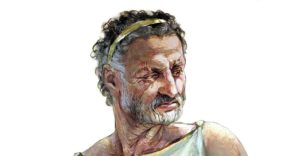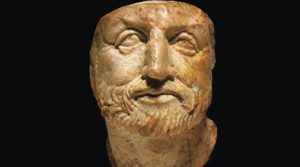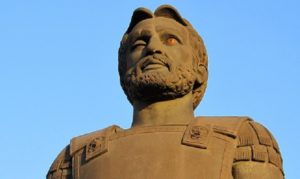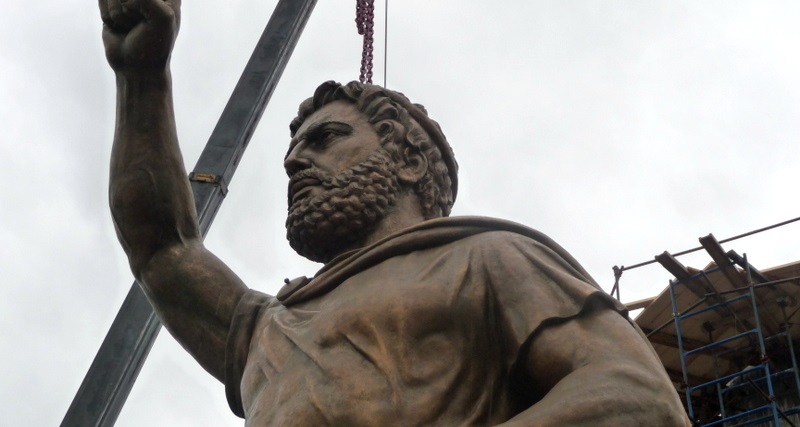Philip II of Macedon was the king of the ancient Greek kingdom of Macedon from 359 BC until his assassination in 336 BC. He was a member of the Argead dynasty of Macedonian kings, the third son of King Amyntas III of Macedon, and father of Alexander the Great and Philip III. Take a look below for 30 more interesting and awesome facts about King Philip II of Macedon.
1. The rise of Macedon during the reign of Philip II was achieved in party by his reformation of the Ancient Macedonian army, establishing the Macedonian phalanx that proved critical in securing victories on the battlefield.
2. After defeating Athens and Thebes at the Battle of Chaeronea in 338 BC, Philip II led the effort to establish a federation of Greek states known as the League of Corinth, with him as the elected hegemon and commander-in-chief of a planned invasion of the Archaemenid Empire of Persia.
3. His assassination by a royal bodyguard, Pausanias of Orestis, led to the immediate succession of his son Alexander, who would go on to invade the Archaemenid Empire in his father’s stead.
4. Philip II was the youngest son of the king Amyntas III and Eurydice I.
5. In his youth, Philip II was held as a hostage in Illyria under Bardylis and then was held in Thebes, which was then the leading city of Greece.

6. While a captive there, Philip received a military and diplomatic education from Epaminondas, became eromenos of Pelopidas, and lived with Pammenes, who was an enthusiastic advocate of the Sacred Band of Thebes.
7. In 364 BC, Philip returned to Macedon.
8. The deaths of Philip’s elder brothers, King Alexander II and Perdiccas III, allowed him to take the throne in 359 BC.
9. Originally appointed regent for his infant nephew Amyntas IV, who was the son of Perdiccas III, Philip succeeded in taking the kingdom for himself that same year.
10. Philip’s military skills and expansionist vision of Macedonian greatness brought him early success.
11. He first had to remedy a predicament which had been greatly worsened by the defeat against the Illyrians in which King Perdiccas himself had died.
12. The Paionians and the Thracians had sacked and invaded the eastern regions of Macedonia, while the Athenians had landed, at Methoni on the coast, a contingent under a Macedonian pretender called Argeus.

13. The royal family that Philip was from had ruled Macedon since 700 BC.
14. The young Philip was in a relationship with Pammenes while he lived in Thebes.
15. Philip’s captivity in Thebes led to an education which would change his life for the better.
16. Because he was a royal hostage living with the high-ranking general Pammenes, Philip also got to learn military tactics from Pelopidas and Epaminondas. These men had shaped the Theban military to defeat the Spartans and Athenians in battle.
17. A famous story alleges that Philip fathered an illegitimate son with a noblewoman named Arsinoe, whom he later gave in marriage to a man named Lagus. The boy in question was named Ptolemy, who was a close friend of Philip’s heir, Alexander the Great.
18. Recognizing the need for toughness in his army, Philip banned wheeled transport for the officers, so that they marched alongside the men.
19. He set a cap of camp servants at one for every 10 infantrymen and one per cavalryman.

20. Philip was given the position of regent to his nephew, but instead, he saw his chance to take the throne for himself. He usurped the throne and became king.
21. He was incredible at diplomacy. He barely put the crown on his head before he had negotiated with the Athenians to withdraw their support for Argaeus, who would later die in battle with Philip, and he also bought off the Paionians with bribes to leave Macedon alone.
22. Philip made a deal with the Illyrians to be satisfied with the land they had taken rather than keep going for the rest of Macedon by taking Bardylus’s great-granddaughter, Audata, to be his wife.
23. Audata, like most Illyrian women, was trained in the art of riding and warfare. She would pass on these skills to her daughter Cynane, who was her only child with Philip.
24. Sources indicate that Audata changed her nae to Eurydice when she married Philip, which had been the name of Philip’s mother, who had also been of Illyrian descent.
25. In 358 BC, just a year after making peace, Philip marched an army of Macedonian soldiers against his new Illyrian in-laws. By the end, Philip was victorious and the Illyrians were forced to pay Macedon tribute.

26. When the Paionian king died, Philip took advantage of the power vacuum by conquering Paionia and adding it to Macedon’s territory.
27. He went against the Athenians by seizing the coastal town Amphipolis, which was a highly valuable port to Athens.
28. After marrying Audata, who stayed married to him even after he had subjugated her people, Philip took two more wives in rapid succession. One was named Phila of Elimeia, the other was Nicesipolis of Thessaly.
29. Philip wanted to make Arymbas an ally to Macedon, so he sealed the deal of an alliance by taking Arymbas’ niece as his fourth wife. Her name was Olympias, and she became the leading wife of his harem.
30. Olympias bore him his first son, Alexander.




